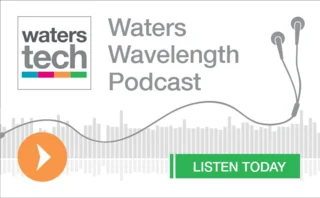Shortening the Settlement Cycle: Then and Now in Asia
DTCC’s Joseph Capablanca says that while T+1 will bring benefits to Asia investors, industry participants need to improve ‘behavioral processes’.

There was a time when institutional investors in Asia had to settle their US securities transactions in five business days following trade completion, or T+5. Then, in 1995, the US Securities and Exchange Commission (SEC) implemented a T+3 settlement cycle, which subsequently accelerated to T+2 in 2017.
All of these were achieved thanks to industry collaboration and technological and process advancements. Fast forward to today, the SEC has announced the implementation of a T+1 settlement in the US, effective May 28, 2024. Shortening the settlement cycle to T+1 should bring many benefits to the industry, including reduced risk, lowered clearing fund requirements, improved capital and liquidity utilization, and increased operational efficiency.
It will also bring unique challenges.
With the settlement cycle reduced by one business day, firms will have less than 24 hours to complete the required operational tasks prior to settlement. In the absence of real-time operational processing, there will be little room for errors or time to fix issues.
As the SEC’s new ruling requires broker-dealers and their counterparties to complete allocations, confirmations, and affirmations as soon as technologically practicable and no later than by the end of trade date, allocating additional resources to manage post-trade activities is no longer a viable option. In the new T+1 environment, the industry is proposing that trade affirmations be completed by 9:00 pm US eastern time on trade date to enable same day affirmation (SDA) and trade settlement on the due date.
In a condensed timeframe of T+1, behavioral processes need to be updated. That means that fundamental changes need to happen between counterparties, including moving away from manual processes like emails and faxes and adopting automation.
The change in operational requirements
Let’s first look at how the transition to T+1 will affect the processing of institutional trades.
In the US clearing and settlement framework, the processing of institutional trades essentially requires investment managers to allocate block trades accompanied by trade settlement information, or standing settlement instructions (SSIs), to their brokers. Brokers confirm the trades by providing a detailed record of the transaction, including what was traded, the date of the trade, the cost, and the net value. The affirmation process then takes place, requiring investment managers or their appointed custodians or prime brokers to affirm the trades.
These operational steps will now need to be completed on trade date in order for matched and agreed trades to be seamlessly sent to settlement. With less time in the settlement cycle, automation of post-trade processes will be critical to success.
While it may be tempting to address the T+1 operational challenge with incremental adjustments to systems and processes, staggered fixes may expose firms to more risk and cost in the long term.
Joseph Capablanca, DTCC
To ensure compliance, firms should embark on an impact analysis to assess current processes and technologies so as to determine whether changes are needed. It will be helpful to consider digital and analytical tools in the assessment processes in order to obtain metrics on current operational efficiency rates and gain new insights relevant to T+1. These insights can enable firms to correct or anticipate potential operational obstacles.
Ultimately, adopting increased levels of automation and enabling end-to-end straight through processing (STP) across the post-trade processing lifecycle will be critical in preventing operational breaks and ensuring that trades settling in the US are settled in accordance with a T+1 settlement cycle. Additionally, for all Registered Investment Advisers, using digital tools to archive historical trade records will address new record-keeping requirements.
The impact on Asia
Firms in Asia will need to remove any friction in their operational processes and ensure efficiency across time zones to expeditiously match and settle trades on time when trading in US markets. Aside from increasing automation, leveraging a centralized, automated database of SSIs with up-to-date information on settlement and account details will accelerate STP and should reduce trade mismatches and potential trade failures.
At the same time, firms in Asia must consider the financing aspects of cross-border trades, which typically takes place when trades have reached matched-agreed status.
Looking at the squeezed timeframe needed to settle trades on T+1, the industry could take a page out of India’s book on managing foreign exchange (FX) demands when the country moved to T+1 in a phased implementation timeline. In India’s case, the entire industry came together to address the challenges associated with the FX post-trade workflow, including FX liquidity. Given the nuances of each local market, a one-size fits all approach to manage FX financing will not work in Asia.
The recommendation is to review FX requirements at the fund-level or consider a combination of in-house and outsourced solutions, in collaboration with appointed custodians and intermediaries. Alternatively, investment managers could provide standing funding instructions to their custodians to immediately release funds upon trade completion. This approach is applicable when there are funds parked with custodians.
The road ahead
With less than a year until the US T+1 implementation date, firms in Asia are racing against time to put in place an operating framework to ensure compliance with the forthcoming mandate. While it may be tempting to address the T+1 operational challenge with incremental adjustments to systems and processes, staggered fixes may expose firms to more risk and cost in the long term.
Traditionally, investments in the middle and back offices have not been a top priority. That said, now is the time to seriously consider a strategic and holistic investment to simplify post-trade processing by building a zero-touch environment from trade execution to settlement finality. The solution will help to lower operating costs and risks, and can help to future-proof against evolving regulatory obligations and unprecedented events.
Firms should seek guidance and consult with experts, as needed, to assess front-to-back securities workflows, navigate the misalignment of settlement cycles across global markets, and—most importantly—identify critical changes required to move to T+1.
There are lessons to learn from “invest now, save more later” when implementing change management involving people, processes, and systems. The time to prepare is now.
Joseph Capablanca is an executive director and head of relationship and account management for Asia-Pacific at the DTCC.
Only users who have a paid subscription or are part of a corporate subscription are able to print or copy content.
To access these options, along with all other subscription benefits, please contact info@waterstechnology.com or view our subscription options here: https://subscriptions.waterstechnology.com/subscribe
You are currently unable to print this content. Please contact info@waterstechnology.com to find out more.
You are currently unable to copy this content. Please contact info@waterstechnology.com to find out more.
Copyright Infopro Digital Limited. All rights reserved.
As outlined in our terms and conditions, https://www.infopro-digital.com/terms-and-conditions/subscriptions/ (point 2.4), printing is limited to a single copy.
If you would like to purchase additional rights please email info@waterstechnology.com
Copyright Infopro Digital Limited. All rights reserved.
You may share this content using our article tools. As outlined in our terms and conditions, https://www.infopro-digital.com/terms-and-conditions/subscriptions/ (clause 2.4), an Authorised User may only make one copy of the materials for their own personal use. You must also comply with the restrictions in clause 2.5.
If you would like to purchase additional rights please email info@waterstechnology.com
More on Regulation
2026 will be the year agent armies awaken
Waters Wrap: Several AI experts have recently said that the next 12 months will see significant progress for agentic AI. Are capital markets firms ready for this shift from generative AI to agents?
Despite regulatory thaw in US, major questions remain globally for 2026
From crypto and tokenization to the CAT to consolidated tapes to T+1’s advancement, the regulatory space will be front and center in the New Year.
Will overnight trading in equity markets expand next year? It’s complicated.
The potential for expanded overnight trading in US equity markets sparked debate this year, whether people liked it or not.
Waters Wavelength Ep. 342: LexisNexis Risk Solutions’ Sophie Lagouanelle
This week, Sophie Lagouanelle, chief product officer for financial crime compliance at LNRS, joins the podcast to discuss trends in the space moving into 2026.
Citadel Securities, BlackRock, Nasdaq mull tokenized equities’ impact on regulations
An SEC panel of broker-dealers, market-makers and crypto specialists debated the ramifications of a future with tokenized equities.
FIX Trading Community recommends data practices for European CTs
The industry association has published practices and workflows using FIX messaging standards for the upcoming EU consolidated tapes.
Interview: Linda Middleditch, Regnology
Regnology’s Linda Middleditch discusses its acquisition of Wolters Kluwer’s FRR business
Tokenized assets draw interest, but regulation lags behind
Regulators around the globe are showing increased interest in tokenization, but concretely identifying and implementing guardrails and ground rules for tokenized products has remained slow.







